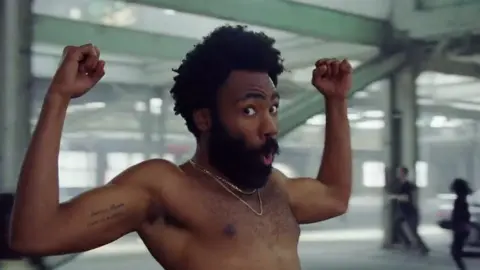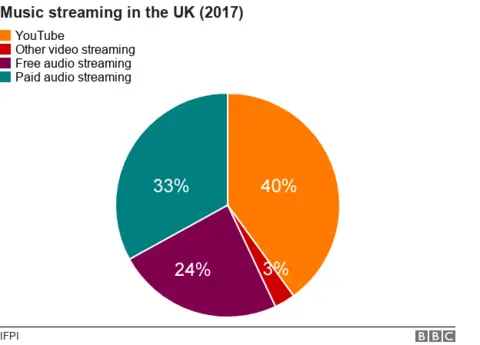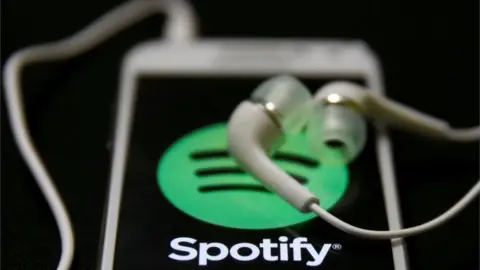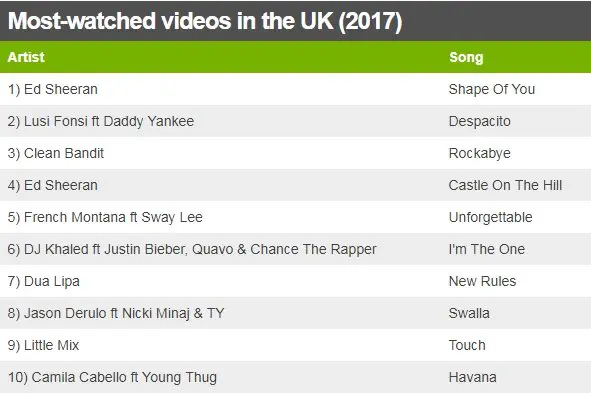UK singles chart to include music videos for the first time
 Official Charts
Official ChartsSince YouTube launched, the streaming site has seen 20 music videos break the two billion views mark.
Sitting at the top of the heap is Luis Fonsi's Despacito, which has been watched a staggering 5.2 billion times.
But none of these views ever counted towards the song's position on the UK singles chart.
That will change on Friday, when the Official Charts Company overhauls its rules to include music video streams and downloads for the first time.
Unofficial videos and user-generated content featuring music will not count - but official videos played on YouTube, Apple, Tidal and Spotify in the UK will.
Allow Google YouTube content?
"The way that music fans are consuming music is changing by the month," explains the charts' chief executive Martin Talbot.
"It seems anachronistic to be saying, 'we're only going to count the song', when it also has a video attached to it."
The move, which comes exactly four years after audio streams were incorporated into the chart, has been approved by record labels and BBC Radio 1, which broadcasts the chart every Friday.
The first chart including video streams will be published on 6 July. The album chart will not be affected.
Here's what you need to know about the change.

Big-budget videos won't necessarily benefit

 Liberation Music
Liberation MusicForty per cent of all music streaming in the UK takes place on YouTube - raising the prospect that stars like Beyonce and Taylor Swift, whose lavish videos rack up millions of views, could benefit most from the changes.
Not so, says Martin Talbot.
"This isn't going to be a handbrake turn," he tells the BBC. "We're not going to suddenly see dozens of songs in the Top 20 that weren't there before."

In test charts, songs with viral videos only received a small upgrade to their chart position.
"The most obvious recent one was Childish Gambino's This Is America," says Talbot.
"Everyone was talking about it for days and days - and the week that all happened, it might have been three or four places higher. That was it."

Unsurprisingly, pop stars love it

Allow Google YouTube content?
"It's definitely about time," says Years & Years singer Olly Alexander, who's making a video for every song on the band's new album, Palo Santo.
"So many people now just watch the video - they're not even aware of the song separate from it. The fact they'll be considered now for the charts is a good thing."
Dua Lipa is another singer who knows the power of a good music video - after the colourful, upbeat clip for New Rules turbo-boosted her career last year.
"The response to New Rules was so crazy and I am so grateful for it," she says, welcoming the chart changes.
"Video was really important to me in my career. It's another way, as artists, that we can get our music to our fans."
Henry Scholfield, who directed New Rules, adds: "I think its good for the stature of videos. They might become important again.
"What I'm hoping is that this will focus record labels on investing in videos, now that there's a tangibility to the result. If you suddenly have double the budget, you can do something extraordinary. And hopefully pay the crew decently."

Some people wanted free streams thrown out completely

In Spain, France and Italy, music played on free, ad-funded services like Spotify and YouTube don't count towards the chart.
Although some in the UK were in favour of adopting that approach, the Charts Company decided against it.
"We thought that was too far," says Talbot.
"We recognise there are younger fans who maybe don't have access to credit cards, or low-income music fans who can't afford a subscription but will still listen on legitimate, ad-funded streaming services."

If you pay for music, you'll have a greater impact on the Top 40

 Reuters
ReutersA separate tweak to the chart formula will see paid-for music streams carrying more weight than "free" ones.
Under the current system, every 150 streams of a song count as one "sale".
From Friday, the ratio will drop to 100:1 for users on a premium subscription service; while the free rate shoots up to 600:1.
The change will benefit artists who restrict access to their songs on the free versions of Spotify and YouTube - but Talbot promises it will promote new music, too.
"Premium subscribers tend to access new music quicker," he says. "We found in our test charts that new music would enter maybe one place higher than before."
It's also worth noting you can't "spam" your favourite artist to number one. Once you've played a song 10 times in 24 hours, subsequent streams are not counted.

The changes were first discussed four years ago

The Charts Company first considered counting video streams back in 2014. But at the time, YouTube was the only place offering a full video service - and there were concerns over its royalty payments and, supposedly, the clarity of its data (specifically, how long a user needed to watch a video before it counted as one "play").
"I can't really go into the details of specific services," says Talbot. "But any concerns we might previously have had, have been dealt with and sorted out.
"And, you know, that's why these things take a long time."


Follow us on Facebook, on Twitter @BBCNewsEnts, or on Instagram at bbcnewsents. If you have a story suggestion email [email protected].

